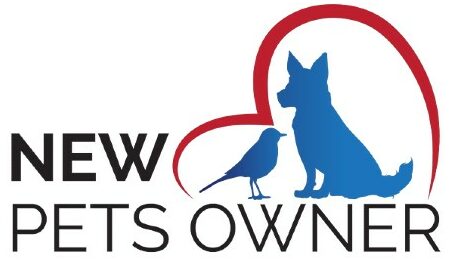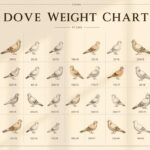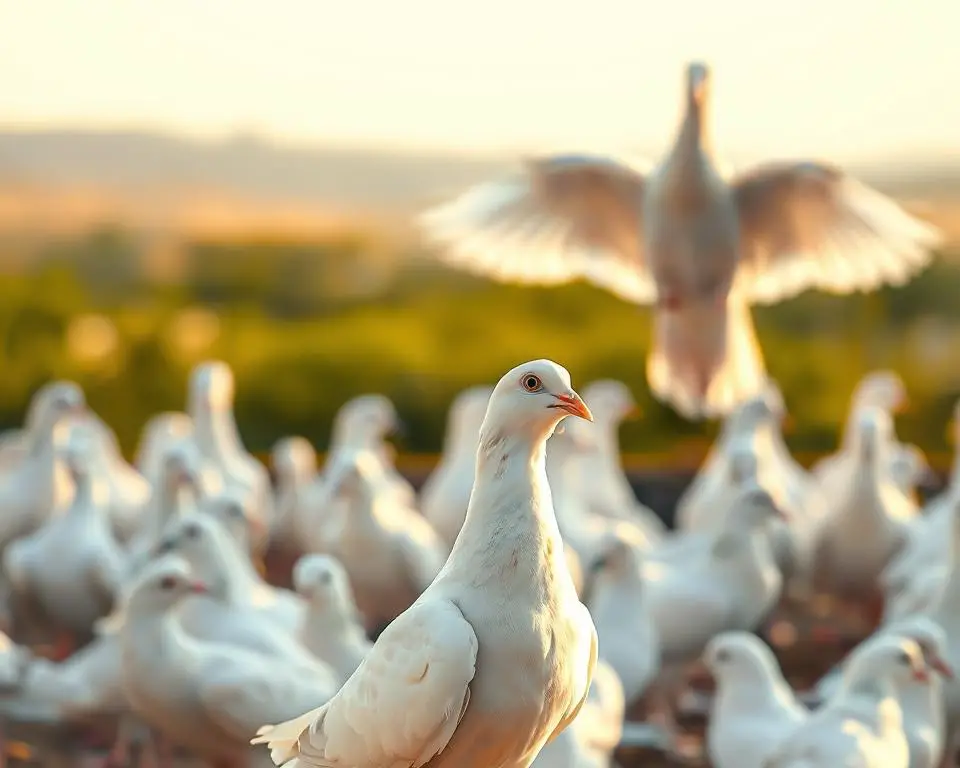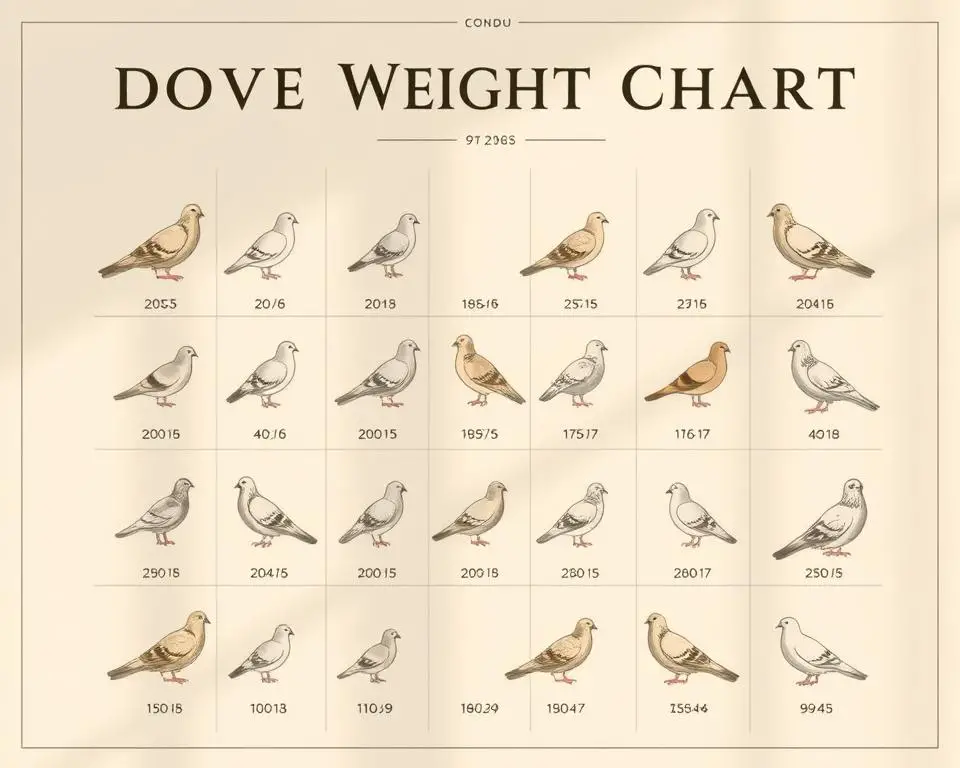Starting your journey as a pet owner means knowing your bird’s needs. The conure size chart is a detailed parrot size guide. It shows the conure dimensions for different species in this lively bird family.
Exploring conures shows a range of sizes, from small to large. Each size needs special care. This conure bird sizing guide helps you match your bird’s size to their needs. You can pick the right clothes, leash, or cage for their comfort.
Keep in mind, this chart is a guide, not a rule. Your conure’s size can change based on their growth, age, and health. Learning about your conure’s size helps build a strong bond with them.
Understanding Conure Sizes: An Overview
Exploring the world of conures, it’s key to grasp their conure characteristics, especially their size. These colorful birds come in many sizes, affecting their care and lifestyle. Their size can vary due to genetics and age, just like their vibrant feathers.
What Determines a Conure’s Size
Several factors influence a conure’s size. Genetics are a big part, setting the size range a bird can reach. The conure’s subspecies also plays a role, with some being larger or smaller. Age is another factor; young conures grow until they’re fully grown, changing size a lot during this time.
The Importance of Proper Sizing for Your Pet
Knowing the bird sizing importance is crucial for conure owners. The right size affects everything from cage and harness choices to accessories. It also impacts their diet and health care needs. Getting a conure’s size wrong can cause discomfort and health problems, showing how vital this knowledge is.
An Introduction to the Conure Size Chart
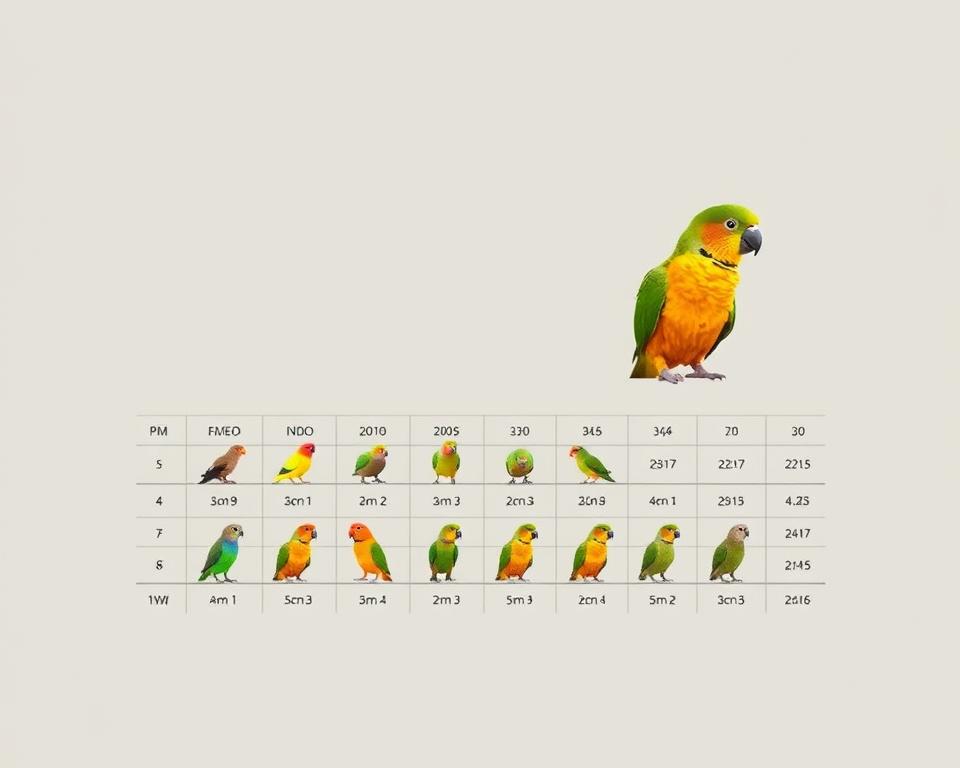
Starting your journey with parrots, especially conures, means knowing their sizes. A conure size chart is key. It helps both new and current owners understand their birds better.
The chart sorts conures by size, from smallest to largest. It helps with cage size and diet choices, based on the bird’s size. This chart is a big help for conure care.
| Size Category | Examples | Typical Wing Span | Average Weight |
|---|---|---|---|
| Petite | Green-Cheeked Conure | Up to 10 inches | 60 to 80 grams |
| Medium | Sun Conure | Up to 12 inches | 100 to 120 grams |
| Large | Blue-Crowned Conure | Up to 14 inches | 130 to 170 grams |
Each size classification offers insights into a conure’s life and needs. Using this chart helps create happy and healthy environments for these birds.
Comparing Sizes: Small vs. Large Conure Species
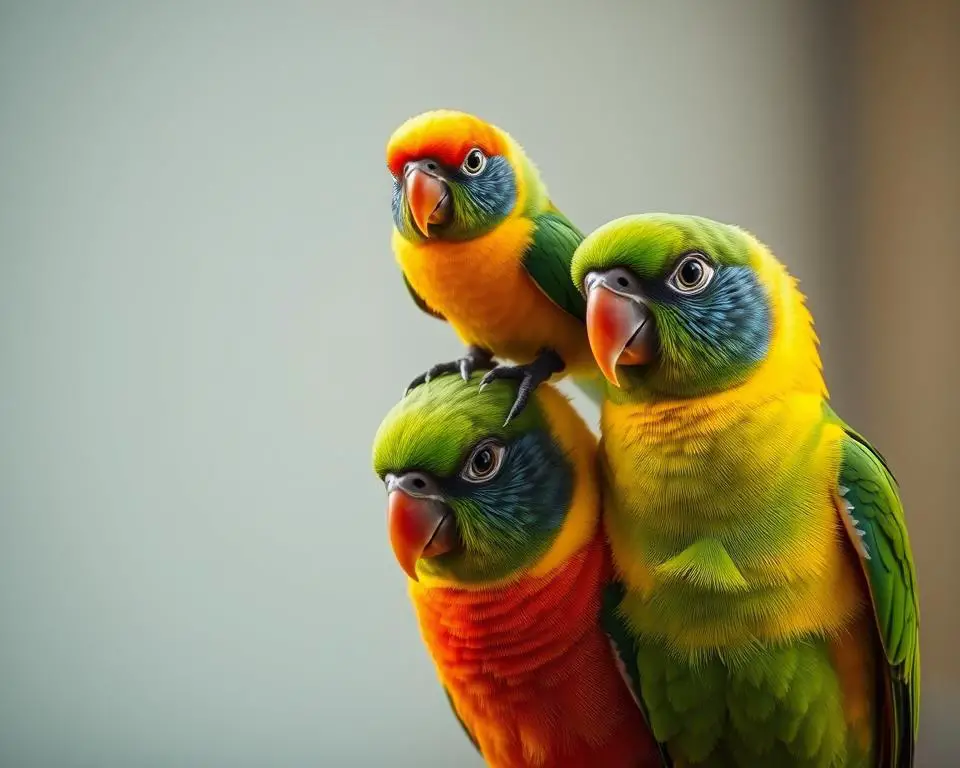
Choosing between small and large conures is more than just a size preference. It’s about knowing and meeting their different needs. Our guide will help both new and current owners understand the care for small and large conures.
Small Conure Breeds: Dimensions and Care
Small conures like the Green-cheek and Maroon-bellied are 9 to 10 inches long. They’re perfect for those with small spaces. But, they need lots of social time and small toys to stay happy and healthy. Here’s a quick overview:
- Size: 9-12 inches
- Diet: High-quality pellet mixture with daily fresh fruits and vegetables
- Housing: Minimum cage size of 20x20x30 inches with multiple perches
- Activity Needs: High, with a need for interactive toys and puzzles
Large Conure Species: Understanding Their Needs
Large conures, like the Patagonian and Blue-crowned, bring their own set of challenges and joys. They can grow up to 20 inches long. They need bigger cages and more food. Their care includes:
- Size: 18-20 inches
- Diet: Larger seed and pellet mix, along with substantial quantities of fresh foods
- Housing: Minimum cage size of 36x24x48 inches with robust, durable toys
- Activity Needs: Moderate, with a focus on physical exercise and some puzzle interaction
Whether you prefer the lively nature of small conures or the grandeur of larger ones, knowing their needs is key. Our guide shows how important it is to tailor care for each conure. This ensures they get the best care possible.
Spotlight on Popular Conure Species and Their Sizes
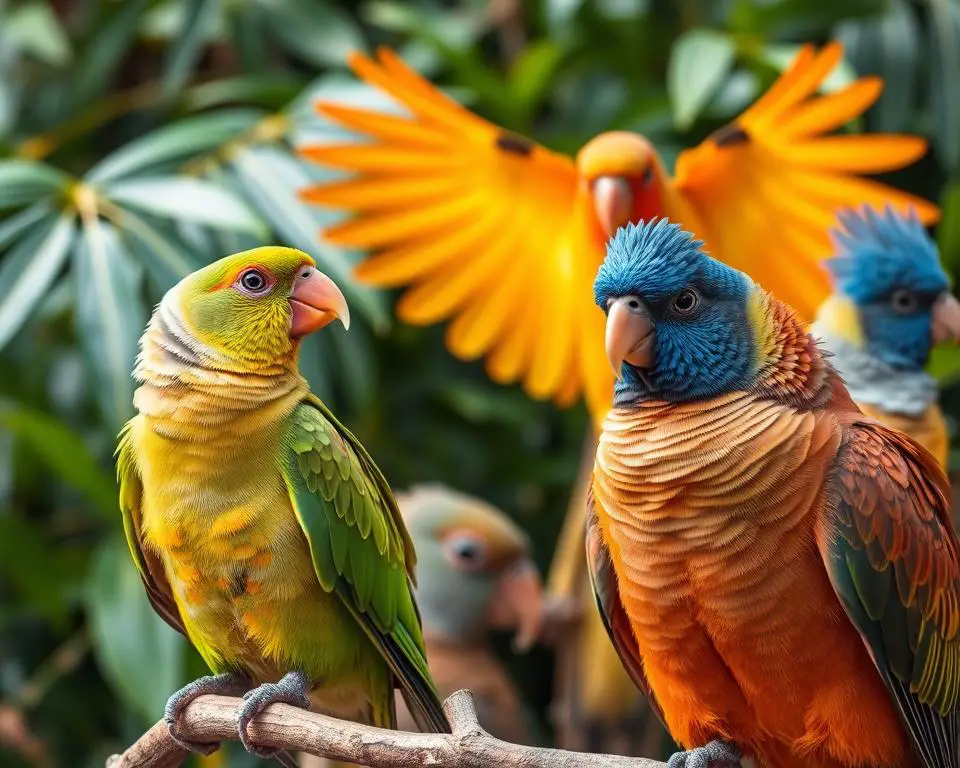
Exploring conures shows a wide range of sizes and traits. This is key for both new and experienced owners. We’ll look at three favorite species, each with its own needs and charm. Knowing these differences can make a big difference in caring for your bird.
Green-Cheeked Conure Dimensions
The Green-Cheeked Conure is a bit smaller, fitting into the “Junior Small” category. They are about 9 to 11 inches long and weigh 60 to 80 grams. Their size is great for those with less space but still want a close bond with their bird.
Sun Conure Sizes: A Colorful Delight
The Sun Conure is medium-sized, with bright colors. They are 12 to 14 inches long and weigh 100 to 130 grams. Their size is a bit bigger than the Green-Cheeked Conure, but they still have a lively personality.
Blue-Crowned Conure: Size and Habitat
The Blue-Crowned Conure is larger, reaching 14 to 16 inches in length. They weigh about 140 to 170 grams. Their size means they need more space and activity, important for owners to think about.
Knowing about these size groups helps tailor care and homes for conures. This conure species guide is a starting point to learn more about popular conure profiles and their needs.
Conure Size Chart: A Tool for Bird Owners
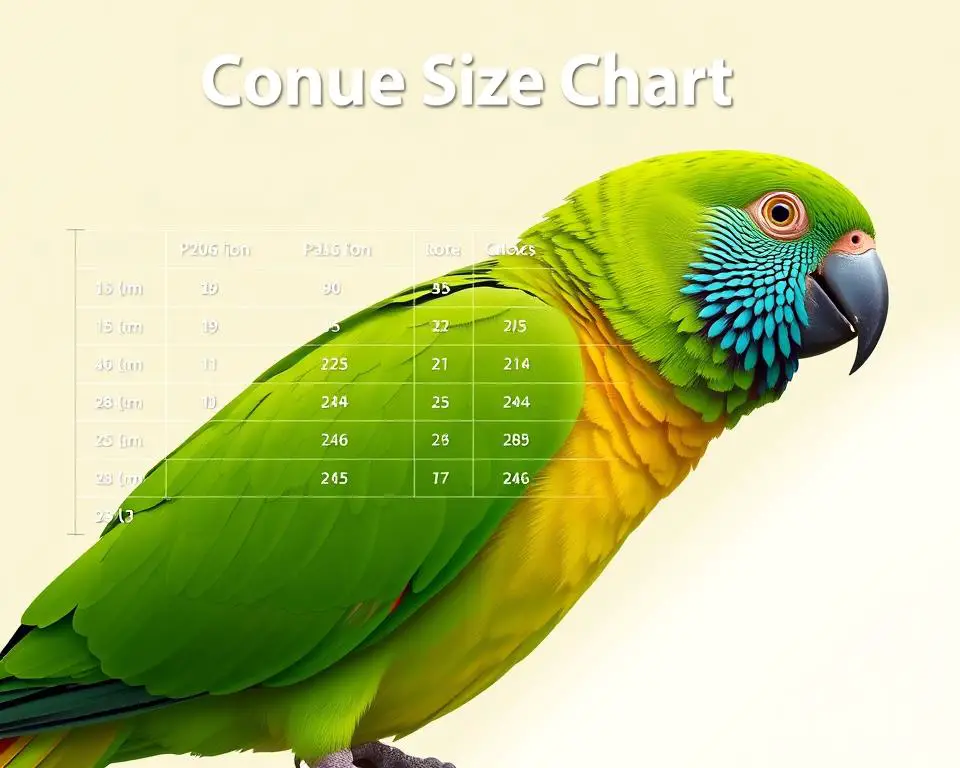
A Conure Size Chart is more than a visual aid for conure lovers. It’s a key bird size tool for pet care. This guide gives quick info on different conure sizes and species. It helps pick the right cage, harness, and toys for your bird’s needs.
Using the chart helps avoid wrong choices in bird products. It’s great for setting up a new home or updating your conure’s space. It makes sure everything fits well, keeping your bird happy and moving freely.
The Conure Size Chart is also a big help for new bird owners. It lists sizes and notes on each bird’s nature and needs. This helps create a caring space that feels like their natural home. With this avian sizing guide, your bird can live a healthier, more active life.
For both new and experienced bird owners, a Conure Size Chart is a smart choice. It’s not just any bird size tool. It’s the right one for your conure’s unique size and needs. This makes caring for your pet even better.
How to Measure Your Conure: A Step-by-Step Guide
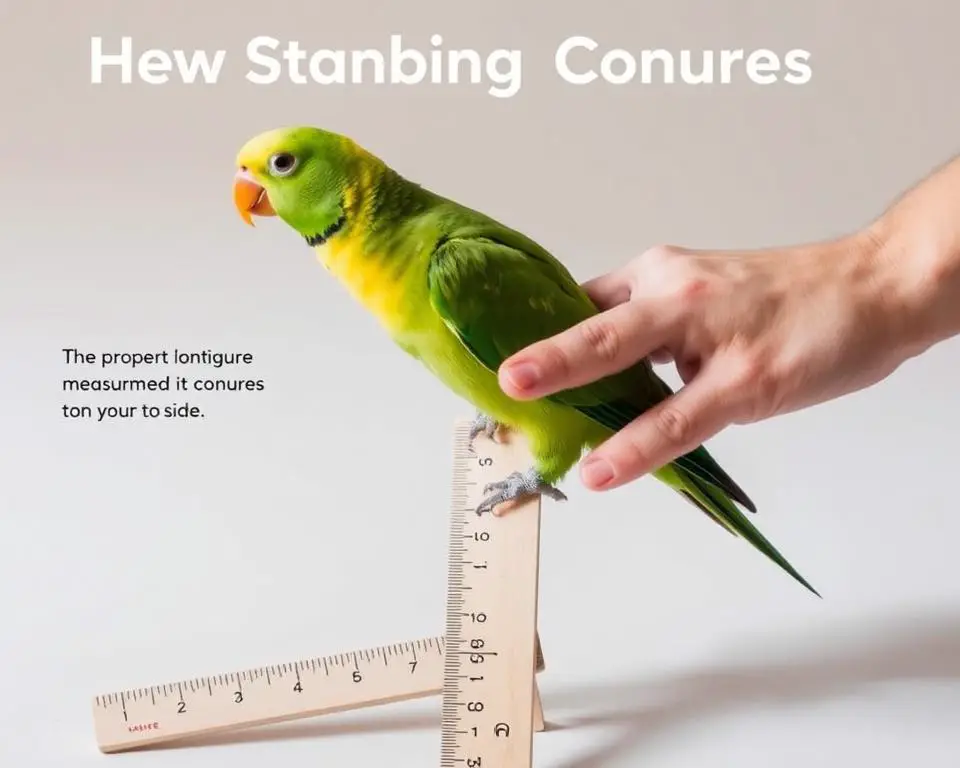
Measuring your conure accurately is crucial for their comfort and safety. It ensures they can move freely and safely in their habitat. This guide will show you how to use the right tools and techniques for precise measurements. This is key for a perfect fit for your parrot.
Tools and Techniques for Accurate Measurements
Start by getting a soft measuring tape. It’s better because it fits smoothly against your bird’s body without causing discomfort. You’ll need to measure three important areas:
- The girth: Wrap the tape around the thickest part of your conure’s body, just behind the wings, to find the circumference.
- From the nape of the neck to the base of the tail: This length is vital for the harness depth and tail movement.
- From shoulder through the legs to the vent: This is needed for measuring garments and diapers for conures.
Keep your conure calm and comfortable while measuring. Treats can help distract them and reward their cooperation.
Interpreting Measurements for a Perfect Fit
Understanding your measurements is crucial for choosing the right accessories. For harnesses, the girth measurement is most important. A harness that’s too tight can restrict breathing, while one that’s too large might let your conure slip out. Always check that there’s a bit of room for movement in any fitting guide for parrots.
For each accessory, look at recommendations from trusted sources or bird care experts. Their advice can help you avoid mistakes that could harm your parrot. A well-fitting accessory can greatly improve your conure’s life, making all the measuring worth it.
Choosing the Right Cage and Accessories Based on Conure Size
Creating a safe and comfy home for a conure depends on conure cage sizing and bird accessory dimensions. The right cage and accessories, sized for their needs, keep them healthy and happy. They also make caring for your bird easier.
It’s key to understand conure cage sizing because these birds need room for movement and mental play. A cage that’s too small can stress them out, while a too-large one might make them feel scared. So, finding the right size is very important.
Size-Specific Habitat Recommendations
For small to medium conures, a cage of at least 24x24x30 inches is best. This size gives them enough space to fly and hop around safely. Also, the bars should be no more than 5/8 inch apart to stop them from escaping or getting stuck.
Perches, Toys, and Feeders: Size Does Matter
When picking accessories, bird accessory dimensions matter a lot. Perches should vary in size to help prevent arthritis and give foot exercise. Sizes from 1/2 inch to 3/4 inch are good for most conures.
Toys should be big enough to keep the bird interested but not so large they overwhelm them. Feeders and water cups should fit well in the cage without taking up too much space. This lets your bird move around easily and keeps the cage clean.
By considering conure cage sizing and bird accessory dimensions, you can make a safe and healthy home for your conure. This environment will help them thrive.
Nutritional Needs Relative to Conure Size
It’s important to know what food conures need based on their size. This helps keep them healthy and happy. The diet should fit the needs of both small and big birds, considering their energy use and body size.
The Role of Size in Diet Planning
The size of a conure affects how much and what kind of food it needs. Smaller birds eat more often because they burn energy faster. They need small, easy-to-digest meals to stay healthy and avoid stomach problems.
Larger conures, on the other hand, need more nutrients because of their bigger size. They should eat bigger pieces of food. This helps them stay healthy and keeps their beaks strong.
Supplements and Treats for Various Sized Conures
Choosing the right treats and supplements is key for conures. The wrong size can cause choking or poor digestion. Here’s a guide to picking the right ones:
| Conure Size | Recommended Treats | Suggested Supplements |
|---|---|---|
| Small | Fresh berries, small nuts | Vitamins A & D, Calcium |
| Medium | Chopped fruits, whole grains | Probiotics, Omega-3 Fatty Acids |
| Large | Leafy greens, large nuts | Mineral blocks, Multivitamins |
By choosing the right food and supplements, owners can give their conures a balanced diet. This diet should match their size and health needs. Always talk to a vet to make sure the diet is right for your conure.
Health and Longevity: The Impact of Size on Conure Wellness
It’s important for bird lovers to understand how size affects conure health and lifespan. Different sizes in conures bring unique challenges and opportunities for health. This section looks at how size relates to health issues and lifespan.
Common Health Concerns in Large vs. Small Conures
Large and small conures face different health issues based on their size. Big conures might get arthritis and heart disease because of their size and longer life. On the other hand, small conures could be more at risk for accidents and toxins because of their size and active lifestyle.
Lifespan Variations Across Different Sized Species
The lifespan of conures varies with their size. Generally, bigger conures live longer than smaller ones. This shows how genetics and environment affect these birds. It also helps owners plan for their long-term care.
Here’s a table that shows the differences in lifespan and health issues among conure sizes:
| Breed | Size Category | Average Lifespan (Years) | Common Health Issues |
|---|---|---|---|
| Green-cheeked Conure | Small | 15-20 | Feather plucking, Respiratory Diseases |
| Blue-crowned Conure | Large | 20-30 | Heart Disease, Arthritis |
| Sun Conure | Small | 15-25 | Skin Allergies, Vitamin A Deficiency |
| Hyacinth Macaw | Extra Large | Up to 60 | Beak and Feather Disease, Proventricular Dilatation Disease |
Real Owners’ Experiences: Insights and Tips on Conure Size Management
Learning from conure owner stories can really help you understand bird size management. Many owners have faced the ups and downs of different conure sizes. Their advice is useful for both new and experienced bird owners.
They share tips on the right cage size and toys for their birds. These insights are crucial. Below, we’ve gathered a table with common advice from conure owners on managing small and large conures.
| Conure Size | Cage Dimensions | Recommended Toys | Owner Tips |
|---|---|---|---|
| Small (e.g., Green-Cheeked) | 24″x24″x30″ | Small ropes, bells | “Frequent interaction is key” |
| Medium (e.g., Sun Conure) | 30″x30″x36″ | Chewable wood, swings | “Provide variety in toys to prevent boredom” |
| Large (e.g., Blue-Crowned) | 36″x36″x48″ | Large ladders, branches | “More space for flying and exercise” |
These tips are all about managing bird size, tailored to each conure’s needs. By following the advice of seasoned owners, newcomers can create a great environment. This environment will help keep these lively birds happy and healthy.
Conclusion
We’ve looked at conure sizes and found the size chart very important. It helps keep these birds happy and healthy. Knowing the right size for your conure is crucial for their well-being.
Choosing the right-sized parrot is key to a conure’s happiness. It helps owners pick the right habitat, food, and toys. This ensures your conure grows well physically and mentally.
In the end, we’ve given you the tools to pick the right parrot and care for it. The conure size chart is essential for a happy life with your bird. Now, you’re ready to enjoy a vibrant and loving relationship with your conure.
